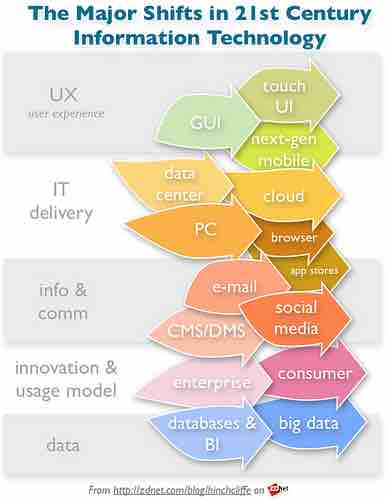Forms of Computer Data
Data are the numbers, characters, or symbols on which operations are performed by a computer, being stored and transmitted in the form of electrical signals and recorded on magnetic, optical, or mechanical recording media. A program is a set of data that consists of a series of coded software instructions to control the operation of a computer or other machine. While program files are referred to as executable files, they may also contain data which is built into the program. For example, some programs have a data segment, which contains constants and initial values. Binary files (readable by a computer but not a human) are sometimes called "data" and are distinguishable from human-readable data, referred to as "text" .

Changing Technology Has Improved The Way Data Is Organized.
Computer systems make it easier to turn data into useful information.
Data vs. Information
Data consists of nothing but facts (organized or unorganized) which can then be manipulated into other forms to make it useful and understandable, turning the data into information. The process of manipulating facts to information is referred to as "processing. " In order to be processed by a computer, data needs to first be converted into a machine readable format. Once data is in digital format, various procedures can be applied on the data to get useful information. Data processing may involve various processes, including:
- Data summarization
- Data aggregation
- Data validation
- Data tabulation
- Statistical analysis
Data processing may or may not be distinguishable from data conversion, which involves changing data into another format, and does not involve any data manipulation. During processing, raw data is used as an input to produce information as an output, typically in the form of reports and other analytical tools.